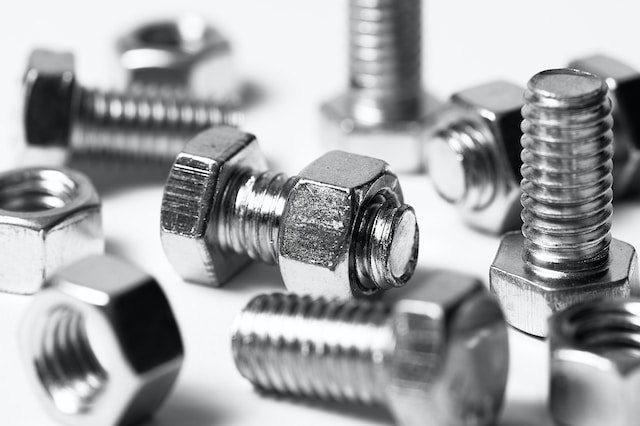When it comes to DIY projects, one crucial aspect that often gets overlooked is bolt selection. Choosing the right bolts for your projects can significantly impact their durability and reliability. Whether you’re building a piece of furniture or working on a home improvement project, understanding the secrets of bolt selection will save you time, money, and frustration. In this blog, we’ll discuss six must-know tips for DIY enthusiasts to select the perfect bolts for their projects.
1. Understanding Bolt Grades and Materials
Understanding bolt grades and materials is crucial for DIY enthusiasts to select the right bolts for their projects. Bolt grades are alphanumeric designations that categorize bolts based on their mechanical properties, indicating their strength and load capacity. Different grades, such as grade 2, grade 5, and grade 8, offer varying levels of tensile strength. Materials used for bolts can include stainless steel, carbon steel, and alloy steel. Retailers at www.fixabolt.co.uk recommend stainless steel bolts, as these are corrosion-resistant and suitable for outdoor or humid environments. Carbon steel bolts are more affordable and suitable for general applications. By understanding bolt grades and materials, DIY enthusiasts can make informed decisions when choosing bolts for their projects, ensuring durability and reliability..
2. Determining Bolt Size and Thread Pitch
Next, determining the correct bolt size and thread pitch is crucial for secure connections. The size of a bolt is measured by its diameter, which can be determined using various methods. One approach is measuring the distance from the outer thread on one side to the outer thread on the other. Thread pitch, on the other hand, refers to the distance between threads expressed in millimeters (mm). It is crucial to match the thread pitch of the bolt with the corresponding nut or threaded hole for a secure connection. Online sources provide helpful guides on accurately measuring bolt size and thread pitch. Understanding these measurements is vital for selecting the right bolts and ensuring a proper fit for DIY projects.
3. Matching Bolt Type to Application
Choosing the right bolt type for your specific application is vital. Different types of bolts are designed for specific purposes and offer distinct advantages. Hex bolts are the most common and versatile, suitable for various projects. Mating screws have a shoulder that matches the diameter of the sex bolts they are used with. Hanger bolts have wood threads on one end and machine threads on the other, making them ideal for wood-to-metal connections. Understanding the specific requirements of your project, such as material compatibility, load distribution, and aesthetics, will help you choose the appropriate bolt type. The Fastener Type Chart from Bolt Depot provides a useful reference for understanding the different types of bolts available for various applications. By selecting the right bolt type, you can ensure secure and reliable connections in your DIY projects.
4. Considering Load Capacity and Strength Requirements
Understanding the load capacity and strength requirements of your project is crucial for selecting the right bolts. Determine the maximum load or weight that the bolt will bear and choose bolts with suitable load ratings and tensile strengths. Oversized bolts may result in unnecessary costs, while undersized bolts may compromise the structural integrity of your project. Strike a balance between safety and efficiency by selecting bolts that meet the required load capacity.

5. Considering Environmental Factors
Environmental conditions can significantly impact the performance of bolts. Factors such as moisture, temperature, and corrosive substances can cause bolts to deteriorate over time. For outdoor or humid environments, opt for stainless steel bolts, which offer excellent corrosion resistance. In corrosive environments, consider using specialized coatings or materials to protect the bolts from damage. By choosing bolts that are suitable for the intended environment, you can ensure the longevity of your projects.
6. Proper Bolt Installation Techniques
Even with the perfect bolts, improper installation can compromise their effectiveness. Follow proper bolt installation procedures to ensure secure and reliable connections. Pay attention to torque specifications and use a torque wrench to tighten bolts to the manufacturer’s recommended values. Over-tightening can lead to bolt failure, while under-tightening may result in loose connections. Additionally, take precautions such as cleaning the threads, using the correct washers, and applying lubricants as necessary.
Conclusion
Bolt selection is a critical aspect of any DIY project. By following these six must-know tips, you’ll be equipped with the knowledge needed to choose the right bolts for your projects. Understanding bolt grades and materials, determining bolt size and thread pitch, matching bolt types to applications, considering load capacity and strength requirements, taking environmental factors into account, and practicing proper bolt installation techniques will ensure the durability and reliability of your creations. So, the next time you embark on a DIY project, don’t overlook the importance of bolt selection. Happy building!

